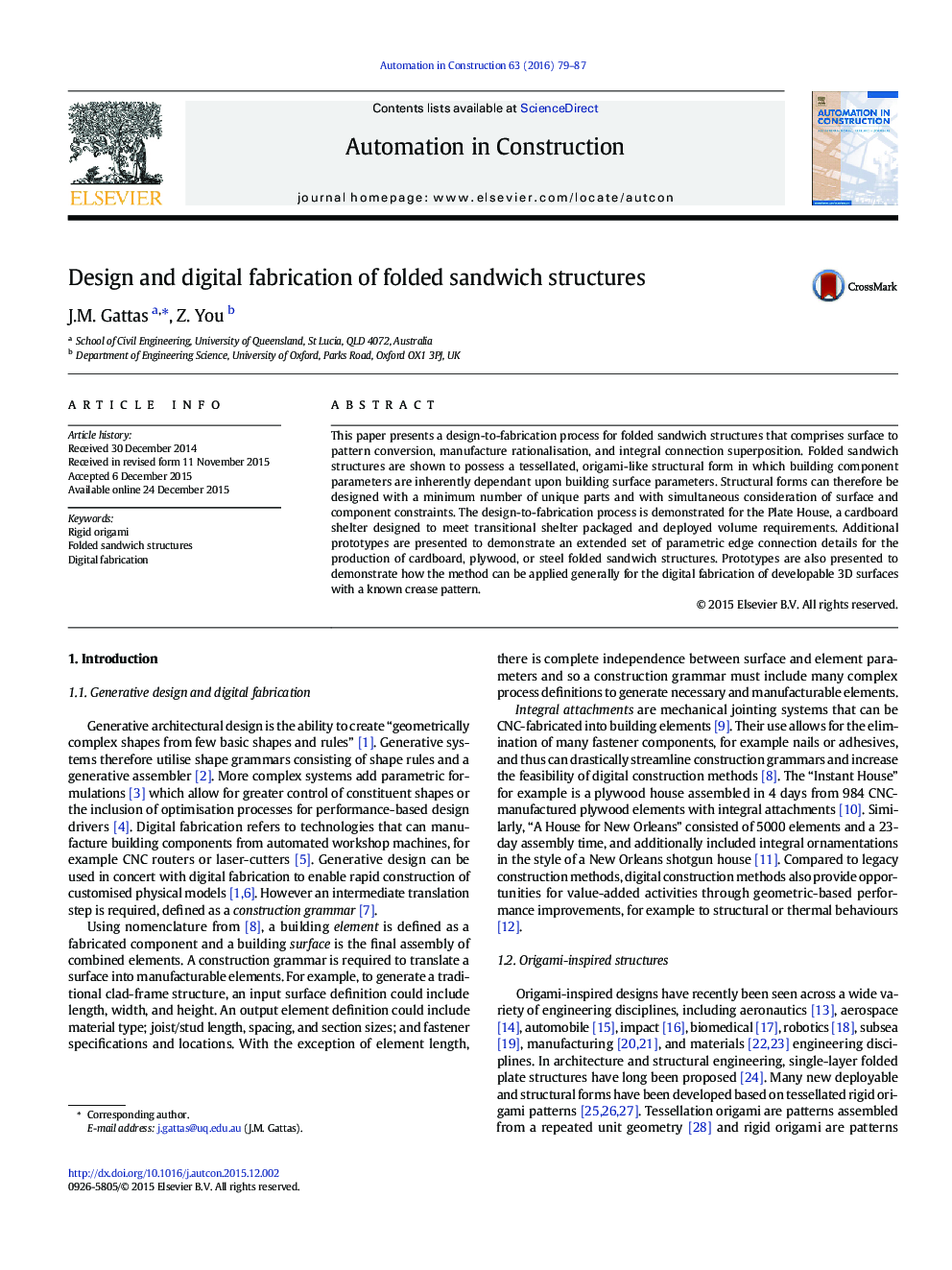| Article ID | Journal | Published Year | Pages | File Type |
|---|---|---|---|---|
| 246292 | Automation in Construction | 2016 | 9 Pages |
•A new design-to-fabrication process for folded sandwich structures•Process allows for simultaneous design to surface and component constraints.•Process is applied for design of the Plate House, a cardboard transitional shelter.•Additional prototypes are constructed to show material and connection variations.
This paper presents a design-to-fabrication process for folded sandwich structures that comprises surface to pattern conversion, manufacture rationalisation, and integral connection superposition. Folded sandwich structures are shown to possess a tessellated, origami-like structural form in which building component parameters are inherently dependant upon building surface parameters. Structural forms can therefore be designed with a minimum number of unique parts and with simultaneous consideration of surface and component constraints. The design-to-fabrication process is demonstrated for the Plate House, a cardboard shelter designed to meet transitional shelter packaged and deployed volume requirements. Additional prototypes are presented to demonstrate an extended set of parametric edge connection details for the production of cardboard, plywood, or steel folded sandwich structures. Prototypes are also presented to demonstrate how the method can be applied generally for the digital fabrication of developable 3D surfaces with a known crease pattern.
Graphical abstractFigure optionsDownload full-size imageDownload as PowerPoint slide
